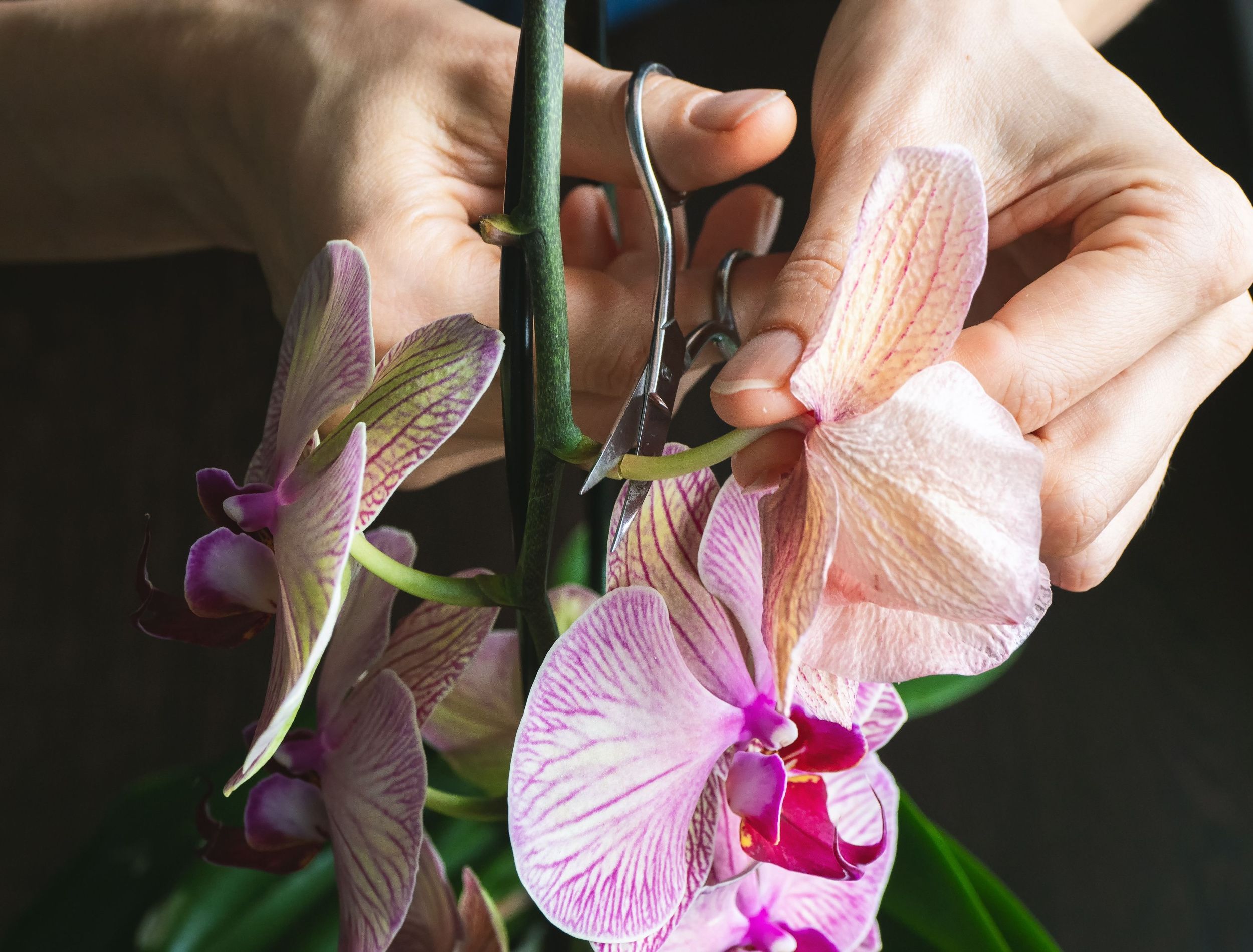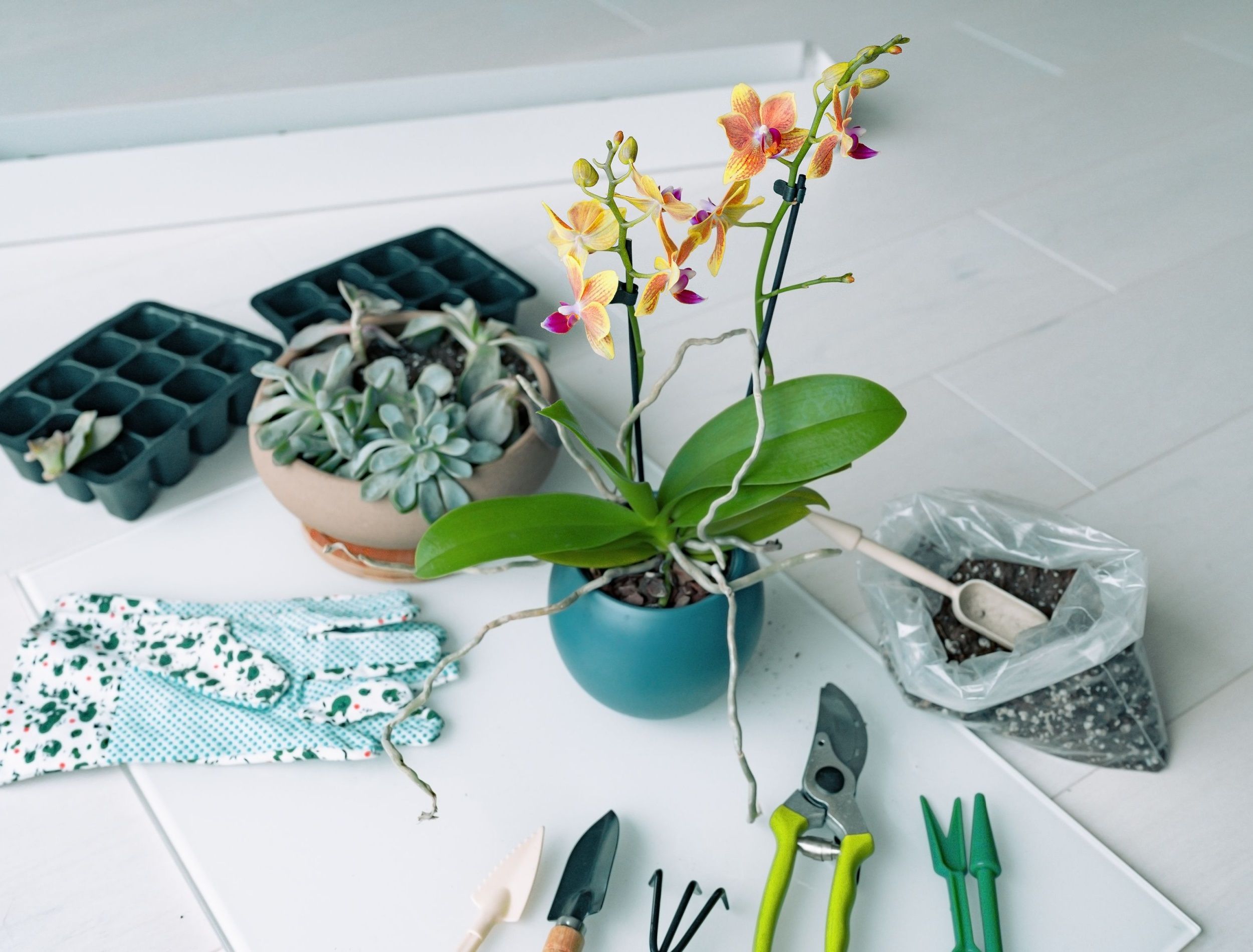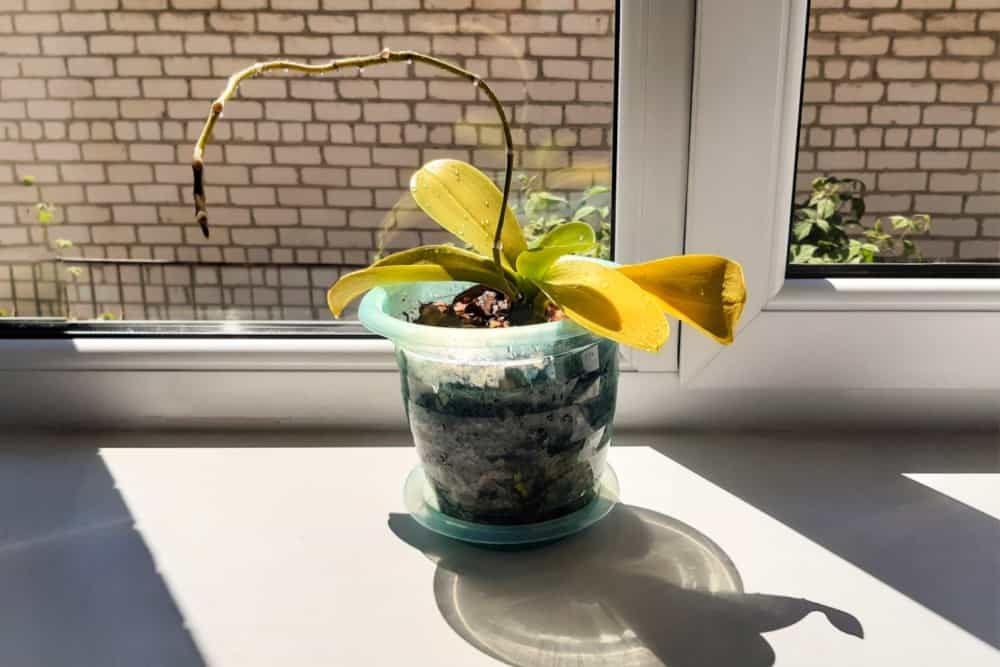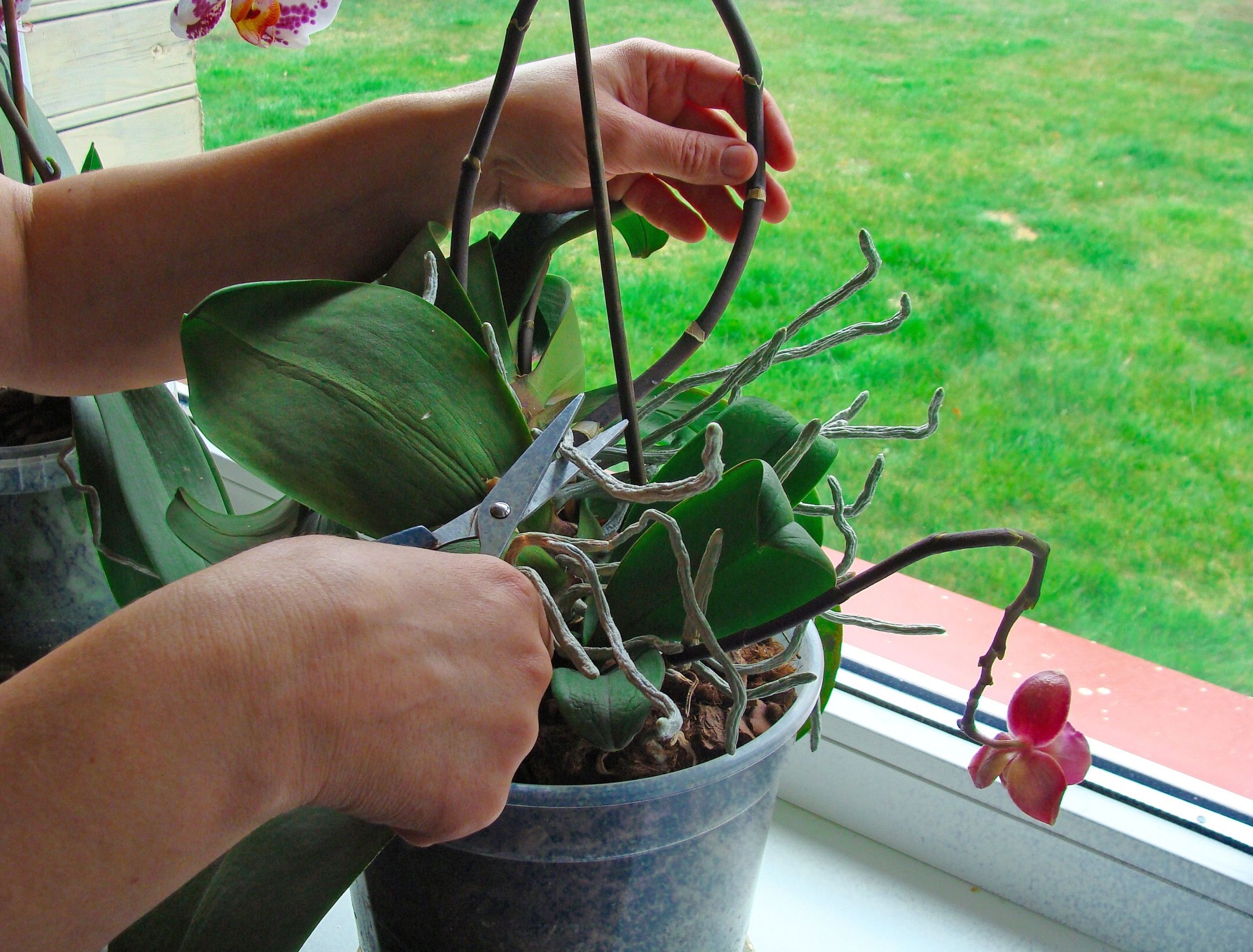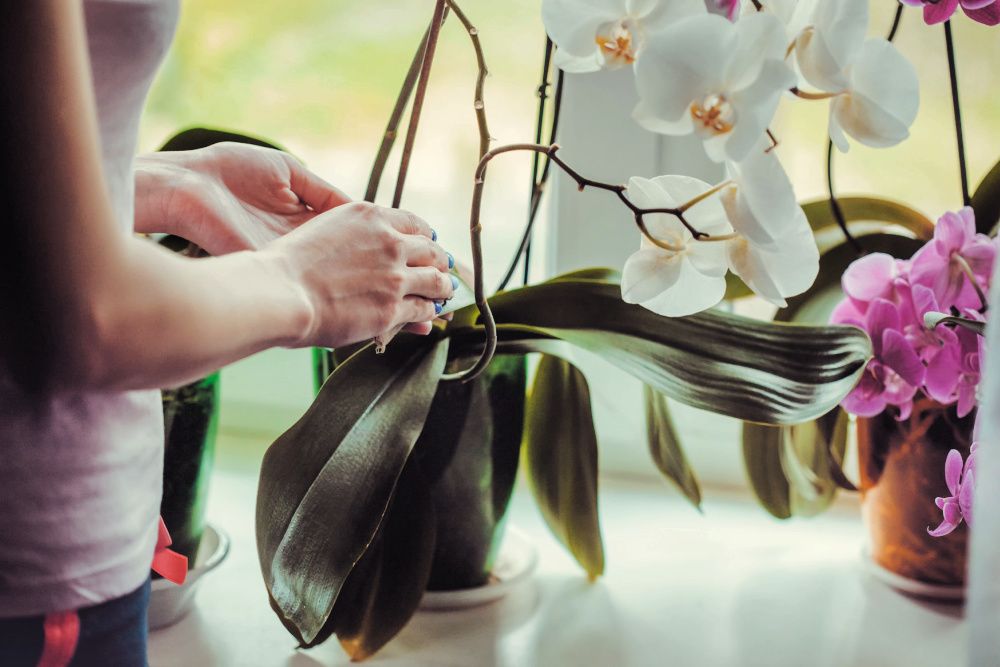Orchids are finicky plants that require the proper time, care, and attention, but they are a stunning addition to your indoor garden. They prefer a well-draining potting mix, plenty of sunlight, and occasional repotting. With these key care factors, your plant will reward you with beautiful, colorful blooms.
But did you know that once those stunning flowers inevitably fall off, it's time to prune? In fact, pruning your orchid will encourage new blossoms and healthy growth. But how should you go about this process to ensure success? Below, you'll discover when you should prune your orchids and a step-by-step guide to getting the job done right.
Tools You'll Need
Image credit: Maridav via Shutterstock
The tools you'll need for pruning orchids are basic, and most home gardeners likely already have the essentials in their collection! Find what you'll need and some optional items for repotting below.
For pruning:
- Orchid plant(s)
- Pruning shears
- Gardening gloves
- Rubbing alcohol
For repotting:
- Orchid potting mix
- A pot the same size or the next size up
- Hand trowel
- Stake and clip
When to Prune Orchids
Image credits: Pencil case via Shutterstock
Pruning orchids is essential to caring for plants, but you can also do it to encourage new blooms. As a general rule, prune orchids only after the flowers begin to fade or have fallen off. You can also prune if you notice yellow, brown, or black spikes and old leaves.
Your orchid should also be healthy enough for pruning. Inspect its root system, watching for healthy green roots and glossy green foliage. Yellow foliage and wet soil can be signs of other issues, such as overwatering. Improper lighting may also contribute to a lack of flowering. Consider repotting your orchid if it seems to have outgrown its current pot.
As a side note, the moth orchid (Phalaenopsis) is one of the most common orchids for indoor gardens. Other popular options include the dancing lady orchid (Oncidium), cane orchid (Dendrobium), corsage orchid (Cattleya), and slipper orchid (Paphiopedilum). Fortunately, most orchids require similar pruning techniques.
Pruning Orchids
Image credit: Grandpa via Shutterstock
Once your orchid's flowers have died back, it's time to get pruning! Pruning orchids is a relatively simple process, but it is essential to do the job correctly. Start by sterilizing and sharpening your pruning shears.
You can clean the shears with soapy water and a scrubby brush. Sterilize the shears with rubbing alcohol, allowing them to soak for 30 seconds to remove any bacteria
Prune the orchid at the base of the stalk. When it's ready to regrow, most orchids will produce a new stalk. The moth orchid, however, may continue flowering on the same stalk, so you should leave two nodes at the base of the stem. You can also prune off any dead roots, leaves, or brown or black stems. New flowers should form within eight to 12 weeks.
Caring for Orchids After Pruning
Image credits: titov dmitriy via Shutterstock
To ensure your orchid flowers after pruning, you must provide the plants with the proper care. While orchids have a reputation for being difficult to grow, providing them with the right conditions and care will help them thrive.
Once the orchid has finished flowering, it's also an excellent time to repot your orchid. Roots shooting out of the soil and wrapping around the pot are a sign it's time to repot. You should repot orchids annually or every other year, depending on how root-bound the plants are. Opt for a pot one size up and refresh the soil to ensure the plants get enough nutrients.
Orchids prefer 12 to 14 hours of natural daylight, so placing the plants in an east- or south-facing window is your best option. While these lighting conditions can be challenging to achieve, you can opt for a grow light to supplement a lack of light. The plants also prefer humidity levels around 40 to 70 percent, so you may want to install a humidifier or place them in a bathroom.
Since the roots quickly soak up water, it's crucial to maintain a watering schedule. Water weekly in the summer and reduce in the cool temperatures of the winter, allowing the potting mix to dry out between waterings.
Y'Orchidding!
Orchids do not need extensive pruning but benefit from an annual chop to encourage new and healthy growth. Fortunately, the task is quite simple and involves removing the main stem (apart from a few nodes if you're working with a moth orchid), clearing away dead foliage, and potentially repotting.
If you properly take care of your orchids, they will thrive and bloom for years to come. Do you have any tips for pruning and caring for orchids? Share in the comments below!

